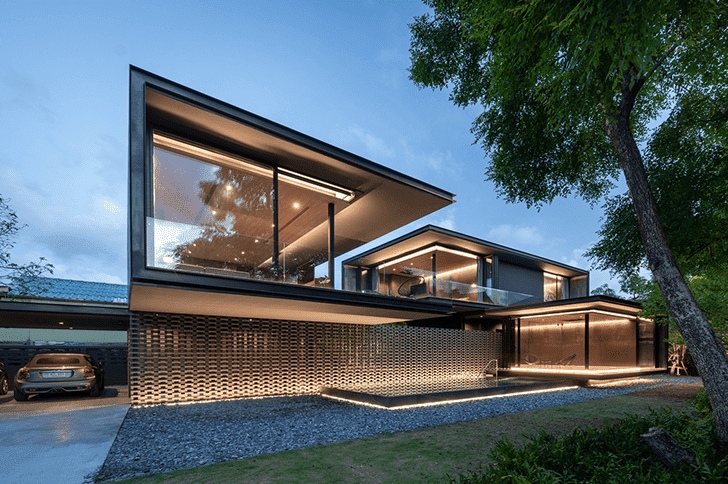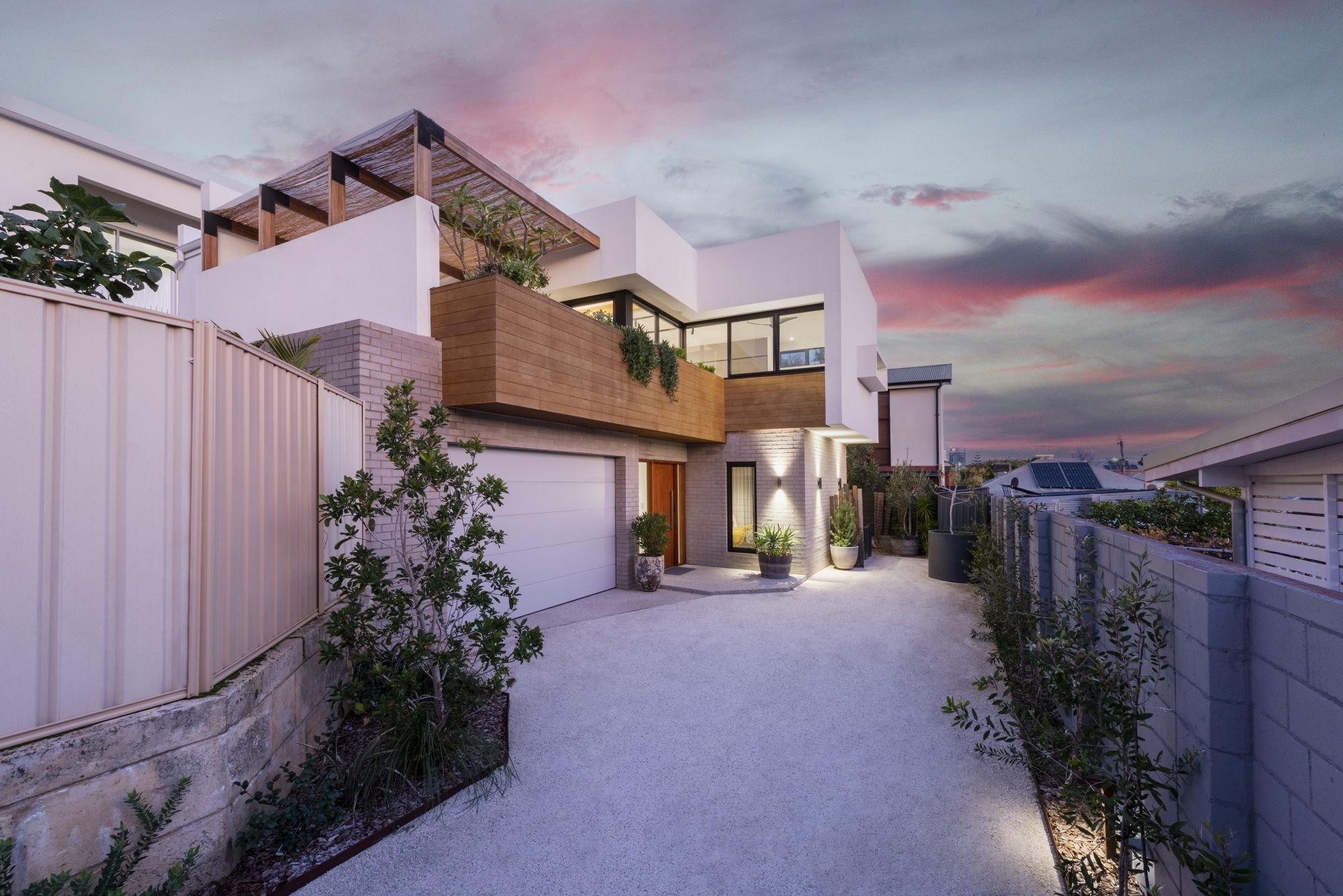How Residential Architects Create Customized Houses for every single Way Of Life
The process by which property architects layout personalized homes is a nuanced interplay of recognizing client demands and equating those understandings into practical living rooms. Through extensive appointments and the usage of layout devices, architects catch the essence of their clients' way of lives, making sure that each home mirrors individual worths and desires.
Understanding Customer Needs

Effective interaction is critical in this procedure. Architects need to urge clients to verbalize their way of livings, family dynamics, and future aspirations, guaranteeing that the style mirrors their one-of-a-kind identity. By using tools such as questionnaires, interviews, and aesthetic surveys, architects can gather beneficial understandings into the client's vision.
Furthermore, recognizing the context in which a home will certainly exist is vital. Designers should take into consideration factors such as the site characteristics, neighborhood climate, and cultural influences that can impact the style. This alternative technique enables for the creation of spaces that are not only cosmetically pleasing but sustainable and additionally sensible.
Inevitably, a deep understanding of customer needs allows engineers to produce tailored homes that improve the top quality of life for their passengers, cultivating a feeling of belonging and comfort within their living atmospheres.
Design Process and Cooperation
The style procedure in residential design is a dynamic interplay of imagination and partnership, where engineers, customers, and different stakeholders work very closely to bring a vision to life. This iterative trip generally starts with a collection of conferences to establish an extensive understanding of the client's ambitions, preferences, and way of living demands. During these discussions, engineers gather essential information, enabling them to conceptualize styles that line up with the client's vision.
Adhering to the preliminary appointments, the layout phase progresses via illustrations, 3D versions, and architectural renderings. This aesthetic interaction functions as a tool for engineers to existing concepts, while also welcoming customer comments, guaranteeing that the final style resonates with their expectations. Reliable partnership with engineers, professionals, and indoor developers is important during this phase, as it guarantees that all functional facets of the job are flawlessly integrated.

Incorporating Lifestyle Aspects
Integrating way of life aspects into residential design is vital for producing spaces that truly resonate with the citizens. residential architecture homes. This process begins with understanding the unique needs, choices, and everyday routines of the property owners. Architects participate in extensive discussions to uncover just how the specific or family members uses their space, whether for entertaining visitors, going after hobbies, or looking for peaceful hideaway
When these insights are collected, designers can tailor layout attributes that improve everyday experiences. Open floor plans might be designed for family members that focus on togetherness, while committed offices can be incorporated for those who function from home. Outdoor locations, such as yards or patios, can be stressed for families that enjoy exterior activities or amusing.
Additionally, flexibility is a vital consideration; multi-functional rooms enable versatility as lifestyles progress over time. Custom storage space remedies can likewise be included to meet particular company needs, ensuring that the home continues to be clutter-free and practical. Inevitably, by thoughtfully weaving way of life components right into the architectural textile, domestic designers develop customized homes that not only meet visual needs but additionally substantially boost the quality of life for their clients.
Lasting and Smart Layout
Clever and sustainable style progressively plays a crucial role in residential design, as home owners look for to decrease their ecological influence while enhancing their living experiences. Architects are now integrating green products, energy-efficient systems, and cutting-edge innovations to develop homes that not just satisfy visual wishes however likewise serve the planet.
Incorporating renewable energy sources, such as solar panels and wind generators, permits homeowners to harness natural deposits, considerably decreasing reliance on traditional power grids. Smart home see this here technologies further boost sustainability by maximizing energy usage through automated systems that control home heating, illumination, and air conditioning based on tenancy and preferences.
In addition, the use of lasting building materials-- like redeemed wood, bamboo, and recycled steel-- advertises a circular economy, decreasing waste and source usage. Architects additionally highlight passive layout principles, ensuring homes are oriented for optimum natural light and air flow, consequently reducing the demand for synthetic heating and air conditioning.
Along with eco-friendly benefits, clever and sustainable layout contributes to the total comfort and wellness of locals. By focusing on indoor air top quality and natural environments, architects develop spaces that cultivate wellness, permitting house owners to thrive attuned to their environment.
Settling and Applying Plans
Wrapping up and executing strategies is a vital stage in the residential design procedure, where the vision of a customized home begins to appear. This phase involves careful focus to information, guaranteeing that every element of the style is precisely verbalized and all set for construction. residential architecture homes. Architects work together carefully with customers to assess last plans, attending to any kind of final changes or concerns, while guaranteeing that all aspects line up with the property owner's way of living demands
Once plans are completed, designers prepare extensive building papers, consisting of in-depth illustrations and requirements that work as a blueprint for builders. These files describe products, coatings, and installment approaches, giving quality for service providers and subcontractors. In addition, safeguarding essential authorizations and sticking to regional building ordinance is important, as it ensures compliance and smooth task implementation.
Efficient communication is vital throughout this stage. Normal updates and discussions with builders aid to minimize prospective problems before they emerge. By cultivating a collective environment, engineers can ensure that the implementation aligns with the initial vision. Eventually, this important phase changes ideas right into fact, laying the foundation for read a home that reflects the unique way of living and choices of its occupants.
Verdict
Finally, residential engineers play a critical role in crafting personalized homes that deal with diverse way of livings. Through careful understanding of customer needs, collective layout processes, and the assimilation of lifestyle aspects, engineers guarantee that each home shows specific preferences. The consolidation of lasting techniques and wise innovations better improves performance and ecological responsibility. Eventually, the initiatives of domestic designers finish in the understanding of customized home that advertise convenience and well-being for their inhabitants.
The procedure by which property designers style customized homes is a nuanced interplay of comprehending customer requirements and equating those insights linked here into useful living rooms. Via detailed assessments and the use of design tools, engineers record the significance of their clients' lifestyles, ensuring that each home mirrors personal worths and desires. Designers ought to encourage customers to express their way of lives, family dynamics, and future goals, ensuring that the layout shows their distinct identity.The layout process in residential style is a dynamic interaction of imagination and collaboration, where engineers, clients, and various stakeholders function closely to bring a vision to life - residential architecture homes. Via thorough understanding of customer needs, joint style procedures, and the combination of lifestyle components, architects make certain that each home reflects specific preferences